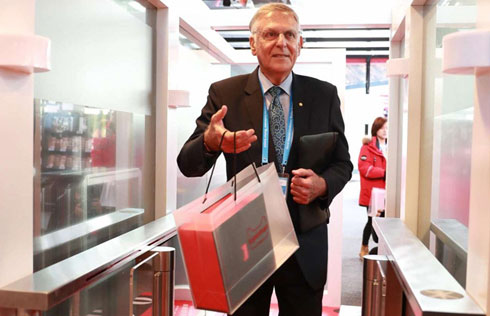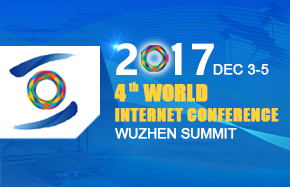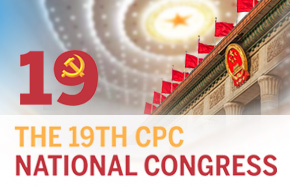Volkswagen: The electrified future is here
Volkswagen Group China's sights are set firmly on new-energy vehicles as the nation's largest automaker looks to an electrified, connected future.
Volkswagen China presented an impressive lineup of plug-in hybrid and allelectric vehicles on Friday at the ongoing Auto Guangzhou 2015, and gave the promise of a more sustainable future for the nation through heavy investment in new energy technologies.
The German automaker's new GTE-badged plug-in hybrids and the all-electric e-Golf are taking center stage at the pavilion. These vehicles form the vanguard of the automaker's charge into NEVs. In line with this effort, Volkswagen's theme this year at Auto Guangzhou of "Connecting to China's Future" has piqued the public's curiosity.
Volkswagen Group China CEO Jochem Heizmann pledged at a media event ahead of the auto show that NEVs would play a crucial role in his company's China strategy in the near future and beyond.
The brand is investing heavily in developing both plug-in hybrid and all-electric battery vehicles, with Heizmann stating that "eco-friendly models and more efficient, sustainable production account for most of our current investment planning". The fruits of their investments are beginning to show.
Five years ago, few would have believed that China would be at the forefront of the world's e-mobility revolution given the galloping pace of growth in gasoline car sales. Now, with e-mobility included in the guideline of the 13th Five-Year Plan (2016-2020), this is precisely what appears to be happening as China stands at the edge of an automotive transformation. Auto industry regulators expect that by 2020 there will be several million NEVs on the roads. It is projected that China will become the largest market for NEVs in the world. Naturally, there is a huge interest among automakers and consumers alike.
However, the surge in momentum behind NEVs comes on the heels of a turbulent summer for the auto industry as a whole. Growth rates for the year were revised down, leading to speculation and discussion about where growth would come from in 2016 and 2017, and what the future holds for the Chinese auto market.
For Volkswagen, things seem to be looking up. The company announced a positive outlook for the end of the year and through into 2016, as well as expressing deep confidence in the Chinese auto market's long-term prospects.
The clear market leader in light passenger cars, Volkswagen bore its fair share of the market cool off in mid-2015 - a fact that only added to the surprise today in Guangzhou, not only at the marque's strong showing, but also at the brand's innovation in electric and hybrid drivetrains.
All-electric future plan
For those who ask how big a future Volkswagen foresees for NEVs, the answer is simply "enormous". Industry experts say sales of NEVs in China grew an incredible 130 percent year-on-year between January and October - a trend that will only accelerate in the coming year.
Obstacles to the large-scale introduction of NEVs exist - most notably, the lack of both a standardized national charging infrastructure and standardized plug system. This has, until now, kept some consumers from buying NEVs.
However, there is tremendous interest in NEVs and fuel-sipping, energy efficient vehicles. For evidence, look no further than demand for models featuring Volkswagen's Turbo Stratified Injection engine plus Direct Shift Gearbox. The turbocharged, compact combo delivers excellent power and torque while reducing emissions and fuel consumption.
Heizmann has said Volkswagen will be at the forefront of electrifying the Chinese auto market but Volkswagen is not waiting for the nation's leap to e-mobility to happen by itself. Rather, the company understands that consumers need solutions that work today, and not in an already all-electric future.
The Volkswagen brand will be rolling out more of its GTE hybrids throughout 2016, while pushing forward with the all-electric up! and e-Golf - both already on the market - with more all-electrics models to follow, all the way up to an exclusively electric next generation Phaeton.
Volkswagen sees plug-in hybrids as a crucial intermediary step, as the nation's charging infrastructure becomes standardized and more easily accessible, since the batteries of the average plug-in hybrid can be charged in about 2.5 hours from a normal socket.
Cars for tomorrow's needs
Volkswagen's newest e-mobility solutions are not blind innovation. After more than 30 years of designing cars to meet the needs of Chinese consumers, Volkswagen has a sophisticated understanding of people's lifestyles, wants and needs.
With over 22 million Volkswagen cars sold in China, the brand has developed deep roots in the market. It is with this depth of awareness that Volkswagen is innovating solutions for the digitalized, interconnected and more urban future of China.
A new global company structure enables Volkswagen Group to focus even more on regional customer needs. The group will become more decentralized, and brands and regions will become significantly more independent, according to Heizmann, who is both CEO of Volkswagen Group China and a board member of Volkswagen Group worldwide.
Heizmann said, "The Group board will deal with issues such as cross-brand product strategy, synergies and driving forward the topics of the future. This consequently empowers us even more to develop the right products for our Chinese customers. We will continue to strengthen our local know-how and R&D capabilities."
Volkswagen Group and its Chinese joint ventures, Shanghai Volkswagen and FAW-Volkswagen, currently run three research and development centers in the country. These centers collaborate closely with those in Germany, and work to provide solutions for the anticipated needs of tomorrow's drivers.
As an example of strides already taken in fuel efficiency, the local R&D centers helped to develop the TSI engine and DSG transmission in 2009, which deliver greater torque and power with lower displacement. Fast forward to 2015 and 74 percent of Volkswagen vehicles built in China have TSI engines smaller than 1.6 liters, meaning Volkswagen's current portfolio neatly matches current preferential tax policies for cars with "smaller" engines.
The new GTE hybrid models are now taking the TSI concept to the next level, by adding an electric motor to the TSI engine and DSG gearbox, delivering emissions-free urban driving while still providing owners with the flexibility of a big driving range.
Volkswagen solutions
Some would argue that, in the short term, the automaker faces a critical hurdle in incorporating its TSI and DSG with an electric motor, given the differences between NEVs and conventional gasoline cars. The question is how to kick-start production of plug-in hybrids, or PHEVs, (and ultimately battery electric vehicles, or BEVs) without dramatically increasing costs and therefore consumer prices.
Volkswagen already has a solution in place. At Auto Guangzhou, the brand revealed that all PHEVs and BEVs are being produced using its innovative modular toolkits - particularly MQB and MLB - whereby cars with totally different drivetrains can be made on the same production line.
This means Volkswagen has the means to rapidly introduce innovative new models and technologies to the market. Of these platforms, the MQB was first introduced to China at the Foshan Plant, where the seventh-generation Golf is being produced.
It also means that Volkswagen does not have to develop an NEV model separately, but is in a position to introduce PHEV and BEV variants across product families and model lines; the Golf GTE and Passat GTE already exist, with plans for many more to come. The platforms are key to enabling pricing to come down, which is important for NEVs to become more mainstream - another way in which Volkswagen is helping to drive China's e-mobility revolution.
Localization will play a major part in Volkswagen's "NEV Offensive", with the group announcing plans to have 15 locally produced NEVs, including both PHEVs and BEVs, on the market in the next three to five years, consistent with its "Made in China" and "Made for China" strategies. Key components, including the battery, e-motor and power electronics, will all be locally produced.
Looking to the future, Volkswagen Group is currently developing the MEB, an electric toolkit. This will be a new multi-brand toolkit especially designed for BEVs. The standardized system will enable a greatly extended all-electric driving range of up to 500 kilometers. The brand also promises the toolkit will allow for the creation of particularly emotional vehicle designs.
The sporty new GTE models and pure-play all electrics showcased at Auto Guangzhou clearly point in the direction China's largest automaker is moving. It seems that Chinese car buyers can stop waiting for the cars of the electric future - for Volkswagen, the future is now.
Star vehicles
e-Golf
The Volkswagen classic is now electric. While all electric on the inside, it remains all Golf on the outside. Every part of the e-Golf has been designed with the lowest drag in mind, such as the roof spoiler and laser-welded body.
The 85kWh, 115 horse power lithium-ion cells in the new e-Golf allow for a range of up to 190 km on a single charge, while adjustable driving and regenerative braking modes help boost range in the most aggressive settings.
Its class-leading power efficiency of 12.7 kWh per 100 km driven saves 10 percent more electricity than others in the segment. An optional 230-volt charger drops charging time to 30 minutes for 80 percent of power.
Despite its all-electric power, the e-Golf retains much of the driving charm of its gas-powered sibling, thanks to a firm suspension and taut handling.
B8 Variant
The full-size wagon made its debut in China at the ongoing Auto Guangzhou 2015 and is expected to launch in the market in the first half of next year.
Designed on the company's new MQB platform, the B8 Variant is significantly lighter and more fuel efficient, thanks to its ultra high strength steel body.
The B8 is powered by a two-liter TSI engine with matching six-speed DSG, and drivers can expect a passion and sportiness from its swift acceleration.
Boasting the latest R-Line design, the new model is also lower in suspension and longer in wheelbase, enabling precise handling and spacious passenger room.
The new model is for middle-class customers who care about their family and their quality of life, and the 1,780-liter trunk can be counted on to make family trips more enjoyable.
zhuanti@chinadaily.com.cn
(China Daily 11/23/2015 page15)








